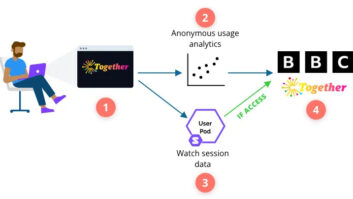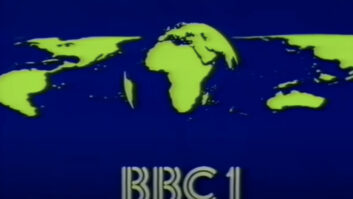
Consumers are the new producers. With the advent of smartphones, video-enabled mobile apps and web-connected video cameras, anyone can be a broadcaster in the purest sense of the word. Add to this, the massive reach of social media platforms such as Facebook, YouTube, Periscope and Snapchat and a new industry has emerged over the last half decade with online video personalities reaching larger audiences than some broadcast TV stations and generating six to seven figure revenue streams from their unique brand of infotainment. All while TV station audiences and revenues have started to decline. With no end to this personally published content in sight, what does this mean for today’s professional broadcasters?
For an industry as steeped in tradition as television broadcasting, it’s understandably hard to navigate the turbulent new video landscape. Finding success means embracing new philosophies of content sourcing, curation and distribution – or as today’s lexicon would have it: relevancy, engagement and reach.
Let’s take a closer look at each of these areas:
– Harness crowd-sourced content to remain relevant – Embracing non-traditional content sources, such as crowd-sourced mobile video, enables broadcasters to cross-programme their traditional newsgathering, thereby providing a uniqueness and relevance that today’s video consumers require. This allows broadcasters to remain trusted by their core (and largely older) audiences, while attracting the next generation of viewers who look for a more authentic or first person type of programming.
– Drive engagement through thoughtful curation – With video technology evolving at an ever-accelerating pace, nearly anyone can broadcast live video over social networks, instantly reaching audiences worldwide. The downside of this democratisation of content is that consumers are increasingly inundated with an overwhelming amount of content choices from sources that lack the “brand equity” that broadcasters still enjoy. Broadcasters have the opportunity to be the DJ’s of their time in relation to the public’s quest for contextually relevant content.
– Increase reach through non-traditional distribution channels – Video continues to be “at the core” of today’s mobile consumers, who demand that content providers reach them whenever and wherever they are. Thus, it is incumbent on broadcasters to find new ways to deliver their new brand of content beyond traditional TV channels and websites. Multi-platform devices, social networks, 3rd party publishing sites all offer new and unique ways to extend the reach of their content, while demonstrating relevance to evolving audiences and drive user engagement.
If the new video landscape and its resultant success has proven anything, it is that by solving for relevancy, engagement and reach, directly correlates to revenue. For television broadcasters, who still have respectable revenue streams from their advertising business, this means not just new online monetisation channels, but also the potential increase in ad CPM’s resulting from increased relevancy, engagement and reach.
Creating the new golden age of television
Ideally, broadcasters want to be able to deliver engaging, contextually-relevant content to their audiences across a multitude of devices, networks and social platforms, thereby addressing consumers’ insatiable demand for news, sports, and entertainment when and where they want it. In today’s world of “Now,” the direct translation of this for broadcasters is “Live” and near-live. To be effective, solutions should be cloud-based, with no new hardware or software to install, enabling easy workflow integration, supporting a business model to monetise the feeds during live broadcasts and on-demand viewing, so both contributors and broadcasters win.
With today’s technology zeitgeist and cloud computing, broadcasters can now acquire, select, manage and playout content in real time.
Mobile, crowd-sourced and contributor-based video represents a massive opportunity for broadcasters to better manage, curate and monetise new experiences. Make.TV is ready to lead in this evolutionary relationship between creator and publisher.
By Andreas Jacobi, CEO and co-founder, Make.TV







